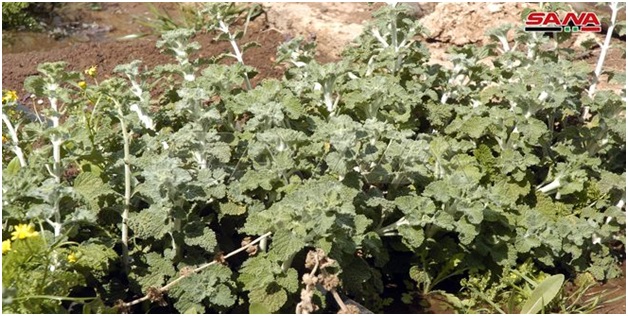The percentage of the implementation of the medical and aromatic cultivation plan in Homs recorded high figures, as the entire plan was implemented through the cultivation of coriander, anise and fennel crops in addition to cumin.
Eng. Tarif Mansour, Deputy Head of Homs Agriculture Directorate , said in a statement to SANA that there is a great demand for cultivating medicinal and aromatic plants, notably in Homs Governorate, for several reasons, the most important of which is that these herbs demand less water and can rely only on rain water, as well as its profitable returns and the duration of its agricultural cycle is short and can be integrated with other crops, such as legumes, indicating that farmers have experience in harvesting these crops in an optimal manner, taking all precautions to prevent corona virus.
Regarding the cultivated areas, Mansour said that 3539 hectares were cultivated with rain-fed cumin, which exceeded the plan they had put, as well as with the rain-fed coriander and irrigated fennel in addition to the cultivation of rain-fed and irrigated anise.
In turn, Mwafak Zakaria, head of the marketing office of the Federation of Homs Farmers, said that some aromatic plants have been planted in Homs throughout the ages while some have been newly introduces as a result of the increased demand from farmers during recent years, adding that and the bulk is planted in the northern countryside of Homs governorate. He indicated that marketing these herbs is private and the process is done through traders according to supply and demand. It mainly depends on exportation to foreign markets.
Inas Abdulkareem

